The baby is born with a set of reflexes. Some of them are considered specific, while others are no different from the reflexes of adults. For example, sometimes a child sneezes and coughs, which frightens the parents very much. But do not worry, in most cases these actions are not a sign of an illness. Let's figure out for what reasons the baby often sneezes.
The cycle is repeated 5 to 15 times, the child has difficulty breathing, even chokes, vomiting and spits clear mucus. These coughing fits usually occur at night and can last up to three months. They expel the child and do not give him food. But in between a cough goes well, the child is doing relatively well and has no fever. The grips spread over several weeks. However, they can recur during normal respiratory infections.
Whooping cough diagnosis
This is supported by additional research conducted after a blood test or bacterial search for microbes in secretions. X-rays of the lungs are sometimes requested. A child's cardiopulmonary auscultation is an important element, especially during crises. Other causes of a rebellious cough can be seen as whooping cough without being a foreign body in the child's respiratory tract, various viruses and respiratory allergies.
Physiological factors
Sneezing is a physiological reflex designed to clear mucus, dust, and other irritants from the airways. Why does a newborn sneeze and cough several times a day? He just needs to free the nose and neck from what has accumulated in them during intrauterine development and passing through the birth canal.
Prevention of a young child is mainly based on vaccination. Whole or acellular pertussis vaccine is better tolerated but less immune. Primary vaccination by subcutaneous injection is given at 2, 3 and 4 months of age, then with booster after 18 months, and then after 12 years. This vaccine combines protection against 4 other diseases and can cause minor reactions or even an outbreak of fever.
Pertussis is experiencing an alarming rise in France among very young infants, often infected by adults vaccinated over 8-10 years of age. In adults, whooping cough often goes unnoticed, so the risk of infection in babies is increased. There is no real direct transmission of immunity from mother to child in whooping cough.
Within two months, the respiratory organs of the crumbs adapt to the surrounding conditions and produce a lot of secretion - mucus. Therefore, parents notice that the child sometimes "grunts". The baby still does not know how to blow his nose, the only way for him to remove snot is to sneeze. In addition, when in contact with air, mucus turns into crusts that irritate the nasal membrane, provoking a cleansing reflex.
Consider your immunization booster that protects against whooping cough, diphtheria, tetanus and polio, which is what experts advise people looking to create family and community staff. Do not hesitate to get to know your doctor! Specialized hospitalization for infants with whooping cough is highly recommended.
Treatment predominantly uses antibiotics of the macrolide family for 15 days. This reduces infectiousness by eliminating bacteria and allowing you to return to nursery or school after 5 days of treatment. Than earlier treatment, the shorter the illness and more cough. Environmental prophylaxis is prescribed to protect the most sensitive: babies, pregnant women and the elderly.
Some babies sneeze during or after a feed. Doctors attribute this to the immaturity of the Eustachian tube - the cavity that connects the nose and ear. She gets irritated from sucking and makes you sneeze.
If a baby older than two months often sneezes, coughs and "grunts", but he does not have a temperature, and abundant snot does not flow from his nose, then, probably, the reason lies in the air around him, or rather, in its dryness or saturation with irritants.
To help your child overcome suffering, one can sit down and calm down at best. Physiotherapy therapy may be prescribed by your doctor to help you breathe. The child should drink and eat enough to avoid fatigue. Newborn: watch out for danger!
Temperature norm for children of different ages
In infants under 4 months of age who have not yet been vaccinated, whooping cough is especially serious. The affected child does not always cough, but difficulty breathing can lead to life-threatening lung complications. Neurological damage can also put your baby's life at risk. Mortality is 2-3% of cases.
Dry air
Optimal indicators of temperature and humidity in the room where the child sleeps and spends most of the time is 18-20 ° C and 60-70%, respectively. If the humidity is lower and the temperature is higher, the nasal mucosa dries up. The result of this can be not only sneezing, but also a weakening of local immunity: moist mucus is necessary to protect the respiratory system from viruses and bacteria.
Cold weather or even a simple air blast can make pregnancy cold. In these cases, are there any risks to the child? Mums crossing the gestation period can be calm. During pregnancy, the immune system is less efficient, so seasonal illnesses are easier to accept. But colds and coughs cannot do any harm, because they are usually viral forms that attack the body superficially. Neither crippled nor coughing - these are dangers: the fetus, well protected by amniotic fluid, will perceive every blow of the cough just as a slight waving.
You can normalize the air parameters using:
- installation of regulators on heating batteries
- using a household humidifier
- frequent ventilation
- regular wet cleaning
Irritants

The common cold can actually become more serious, usually a bacterial infection. Even if it is not overlooked but properly treated, the child is not at risk. Some drugs, or even better than nothing. But while the fever doesn't get too high, the cold can be very hard on the mom. Severe fatigue, joint pain, headache, shortness of breath are the main symptoms, which in any case it is better not to respond to medications. This is due to the fact that the substances contained in antineoplastic medicinesare passed through the placenta to the baby and can cause some complications during pregnancy.
The baby can sneeze due to contact with various aerosol irritants. It's too early to talk about respiratory allergies in the first year of life: babies are more susceptible to negative reactions to food. But if airways the crumbs will constantly succumb to the effects of potential allergens, then after three years he may have hay fever.
If you want to treat cold and fever with the drug, take paracetamol, but see your doctor first. Natural Remedies? If homeopathic remedies seem to be an alternative at first glance, you are still very careful. Some natural products available at the pharmacy or herbal medicine can harm your baby. Also in this case, see your doctor for advice and above all avoid taking care of yourself by improvising yourself. For example, propolis, according to some unconfirmed scientific studies, would not be good for the fetus.
Why does a newborn sneeze? The most common airborne irritants include:
- Dust. Its main sources are soft toys, furniture upholstered in fabric, carpets, curtains. There should be a minimum amount of such things in the children's room. It is advisable to furnish the room where the child sleeps so that the mother can wipe all surfaces in it with a damp cloth every day. Regular ventilation is also required.
- Pungent odors - aromas of detergents, perfumes, cosmetics, paint and others. If there is a child in the house who “grunts” and coughs, it is necessary to stop using any means with a strong smell in his presence.
- Tobacco smoke. Smoking next to the baby is unacceptable. He may also sneeze when he smells the smoker's clothes. Therefore, before approaching the baby, the adult should change clothes.
- Foggy air outside. Walking near large highways is not the best option for a toddler. For the promenade, you should choose green parks or forest plantations, then the crumbs will definitely not have snot and sneezing.
- Plant pollen. Once on the mucous membrane, pollen particles irritate it, and the baby coughs and sneezes. It is difficult to protect him from all plants. But you should not bring flowers close to the baby's face and remove them from the children's room.
- Wool, animal feathers. Fluffy and feathered favorites are the best friends of children. But it is better to limit their communication with babies. And if it is not possible to completely exclude the child's contact with a cat or a parrot, it is necessary to ensure that there are no wool and feathers on clothes, furniture and the floor.
ARI

How could your grandmother? When pregnant, when the cold comes, Grandma's recommendations come back very well. Here are some that are easy to use and effective. Be at ease: The first thing to do when you're in extreme cold is to rest. It will be good for you and your child.
Fruits, Vegetables and Water: Increase your intake of vitamins and minerals by consuming more fruits and vegetables, which are great weapons against viral cooling. Hydration is also important: drink a liter of water a day or tea and fruit juices. For herbal teas that your doctor has found that you can drink.
Sneezing is a possible sign that respiratory disease... His other symptoms are cough, profuse snot, deterioration in general condition, moodiness, hyperthermia (sometimes there is no fever). Usually ARI is preceded by either contact of a child with a sick person, or hypothermia.
Even in the case of a simple acute respiratory disease, the baby must be treated under the supervision of a doctor. When viral infection enough drinking, normalizing the air in the room and antipyretic drugs. If the causative agent of the disease is a bacterium, then the therapy regimen is more complex and is determined only by the doctor.
Big Salt Sumigi: A pot of boiling water, large salt, a towel, and here's a natural way to clear a closed nose and avoid nasal sprays. Sore throat: sage or mashed potatoes fill the burning. Cough: The most classic remedy is honey in milk or herbal tea to help dissolve the catarrh.
Steam bath: Finally, you can also try the eucalyptus and mint steam bath, which frees your nose and makes you sweat. A cold in newborns should not worry their parents, because it is more than just a disease, it is just a natural process that allows the child's body, when it comes into contact with dangerous microorganisms, to fight them. This infection can be caused by an attack of more than 200 different types of viruses that have reached the baby through the respiratory tract, i.e. nose and mouth, for various reasons.
Hygiene of the nose
To make it easier for the baby to breathe, regular cleaning of his nose from crusts should be done. To do this, you need cotton wool and warm boiled water. It is necessary to twist two thin flagella from cotton wool, moisten them in water, carefully shove the crumbs into the nasal passages, scroll and pull out several times.
Seasonal variation and sudden temperature fluctuations are a major risk factor. Over time, a small immune system develops and its defenses are strengthened, so sneezing tends to disappear. To detect cold in babies, it is not enough to observe the presence of a sneeze or a closed nose, as is the case for an adult, but it needs more, because unlike an adult, they only breathe through their nose and they are still unable to communicate. continuous nocturnal awakenings, sudden tears and discomfort during sucking may be the first signs of a cold in an infant.
You can also drip saline into the spout from time to time. Nasal sprays should not be used: at the time of injection, liquid under pressure can enter the Eustachian tube and cause inflammation.
With acute respiratory infections, abundant snot interfere with the baby's eating and sleeping. You can help him by removing mucus with a special suction pump. They are available in the form of rubber pears and thin tubes.
Newborns: Cleansing the nose
As we said, children up to a certain age only breathe through their noses and then clog them, this can be especially annoying for them, especially if we believe that they cannot blow their nose out like adults. The discomfort a child is experiencing may be felt during sleep or breastfeedingthat it is precisely because of their primary nature that can be interrupted by the presence of mild apnea. One of the most effective systems is to wash the nose several times a day, especially before and after the nose, to free the non-newborn from mucus.
If your baby sometimes sneezes, coughs and grunts, but feels good, do not worry. You just need to improve the air parameters in his room - often ventilate, clean regularly, take out all the dust collectors, use a household humidifier and minimize the amount of household chemicals.
Check out the three ways to clean your baby's nose in the video.
These washes can be made using saline or thermal waters or Sirmione together with sterilized sea water. On the market, you can buy packages in both spray and single dose bottles, which is very practical, especially when you are away from home.
The most convenient alternative is to buy a large bottle of saline solution, or a housewife's preparation with boiled water and salt and then refrigeration. A needle-shaped syringe with 5 or 10 ml nostril solution is sufficient to direct fluid into the baby's nostrils. It is important to push the plunger as quickly as possible in such a way as to apply pressure that helps to remove the discharge. We advise you to warm up a little of the syringe with your hands before injecting the liquid, because too cold a solution may disturb the child.
How to lose weight after childbirth?
How to lose weight after childbirth?
Many women after childbirth are faced with the problem of excess weight. For some, it appears during pregnancy, for others after childbirth.
- And now you can no longer afford to wear open swimsuits and short shorts ...
- You start to forget those moments when men complimented your flawless figure ...
- Every time you go to the mirror, it seems to you that the old days will never return ...
First, you should find out why the newborn, the reasons for such a reaction of the body. Knowing the reason will allow you to act on the situation. Only awareness will allow you to start an effective fight against the common cold.
Saline and aerosol
Another cure for a child's cold is aerosol, because the steam helps to dissolve the secretions, but the physiological solution must be used, not drugs. At the end of this medical study, no differences were found between the two groups of children and even with the risk of asthma, coughs, colds, sore throat and respiratory tract from bronchitis.
As for muculitis, specific studies to test the effectiveness of this drug have never been carried out, because large-scale consumption spreads only in our country and the nations facing the Mediterranean, while in the countries of Anglo-Saxon and Northern Europe, mucolytic drugs are used only in cases such as cystic fibrosis, which produces very thick mucus production. When the mucus is caused by a cold, these drugs have no effect on the newborn.
Physiological factors
If a newborn sneezes and coughs, it is not necessarily due to illness.
Often, the newborn sneezes a lot due to natural physiological reasons. The fact is that up to 2.5 months, children develop airways.
The eustachian tube, which connects the nasopharynx and the tympanic cavity, is still in the process of formation. As a result, when breastfeeding, the baby may have a tickle in the nose, which causes sneezing.
According to pediatricians, sneezing in newborns can be explained simply: while the child was in the womb, mucus accumulated in his nasopharynx, and after childbirth, the body seeks to clear the airways that were not previously used because oxygen was supplied along with the mother's blood.
A characteristic feature of newborns is the location of the nasal passage at a special angle, as a result of which edematous and inflammatory processes rapidly spread to the larynx, trachea, bronchi. Therefore, you need to be able to recognize the disease at an early stage.
Also, the newborn sneezes and it is normal when the mother is breastfeeding him. This reaction is due to the fact that the Eustachian tube has not yet formed. When the baby sucks, he feels a tickling in the nasopharynx. This causes him to sneeze periodically.
Other factors
If the nature of such a reaction of the body is not allergic or cold, then you should not worry. Breathing will soon return to normal by itself.
Children and adults sneeze for the same reasons. The exception is newborns and infants, in whom this phenomenon is due to adaptation to the environment.
The infant exhibits all the natural reflexes inherent in adults. Pediatricians note that a newborn sneezes in order to clear the nasopharynx of irritants. Pectoral, because his nostrils are still very small and even a drop of mucus can cause such a reaction.
If the baby coughs and sneezes, the development of bronchitis must be excluded.
A baby may also sneeze for the following reasons:
1. Dry air (this is how infants often react to the starting heating season).
2. Accumulation of dust on various objects with a porous surface.
3. The presence of allergens (wool with saliva, animal secretions, pollen, cosmetics, unusual food and various chemical compounds).
4. The presence of smokers next to the child. The baby begins to cough, sneeze, tears appear, redness on the skin.
5. Conversion of nasal mucus into dried crusts. As a result, they get irritated nerve endings and the baby sneezes.
Possible allergens
The answer to the question of why a newborn sneezes may lie in his nutrition. Sometimes the inclusion of a new product in the diet causes allergies.
If a mother is breastfeeding her baby, she needs to adjust her diet to eliminate the presence of potentially allergenic substances in milk.
If parents suspect a pet's hair is an allergen, a clinical study should be submitted to confirm the concern. With a positive result, deliverance 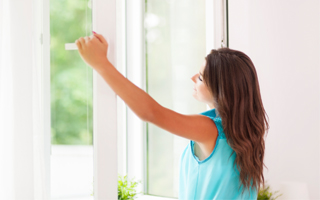 from the animal is not at all the only way out of the situation. Perhaps the problem will be solved by the use of shampoos, sprays to reduce the allergy of wool.
from the animal is not at all the only way out of the situation. Perhaps the problem will be solved by the use of shampoos, sprays to reduce the allergy of wool.
Also, for the period of breastfeeding the child, it is advisable for parents to quit smoking or at least wash themselves thoroughly and change outerwear after smoking.
If you regularly ventilate the child's room, humidify the air, pathogenic bacteria will die.
Cold factor
If a newborn baby sneezes frequently, snot forms, the temperature rises, and a cough begins, these signs often indicate a cold. The likelihood of its occurrence is high enough, since the immunity of a child under one year old is still weak and easily reacts to the causative agents of acute respiratory infections - viruses, bacteria.
A slight hypothermia can lead to a runny nose, and overheating is dangerous: due to the loss of moisture with profuse sweating, the natural defense mechanism is weakened.
The nasal cavity is a favorable place for the active reproduction of pathogenic bacteria. Due to their penetration into the body, mucus is deposited in the nose, which makes breathing difficult.
In turn, all transferred diseases contribute to the fact that the child's immunity is more actively formed.
Causes of hiccups
Often, a newborn often hiccups and sneezes. The causes of hiccups can be different, but sometimes it is enough to wrap the child warmly to eliminate it.
Hiccups also occur due to physiological factors.
Often this symptom is a consequence of the incorrect angle of inclination of the child when feeding, overeating. Since the baby still has a small stomach, when it is stretched, the diaphragm experiences 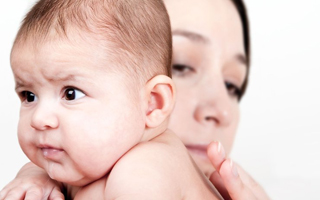 pressure. This causes convulsive seizures. At the same time, the rest of the milk is pushed out - belching occurs.
pressure. This causes convulsive seizures. At the same time, the rest of the milk is pushed out - belching occurs.
If a mother bottle-feeds her baby, an incorrect nipple may be the cause. Often the shape of this device leads to the swallowing of air bubbles along with the contents of the bottle, which causes hiccups.
The baby's nervous system still has insufficient control over the diaphragm, but over time, everything falls into place.
Temperature norm for children of different ages
When a baby sneezes at 4 months after taking a temperature measurement, parents often panic. However, it should be borne in mind that the norm for this age is 37 degrees. In addition, the evening is characterized by elevated temperature, and for the morning - reduced.
If a child is 6 months old sneezes and his temperature rises a lot, this may mean the presence of SARS, flu. In this age normal rate the mark is considered to be 36.6.
If the baby coughs and sneezes, but there is no temperature, the presence of acute respiratory infections can be excluded. However, the child should still be shown to an otolaryngologist to help determine why a newborn is sneezing.
If a two month old baby sneezes
If a child sneezes at 2 months, it is useful for him to drink plenty of water: boiled milk, natural juices, tea, compote. It is too early to treat such a baby with drops, antibiotics.
If you notice that a child at 2 months sneezes often, he has snot, you need to eliminate possible allergens from the nursery. The air in this room must be clean and humid. Provide periodic air currents by ventilating the room more often. A child at 2 months sneezes and coughs if pathogens get a chance to survive.
It is necessary to prevent drying of mucus to avoid obstructive bronchitis, pneumonia.
If a child coughs and sneezes at 3 months, the pediatrician will determine if such symptoms are of a cold nature. Sign of presence colds is thick, yellowish mucus.
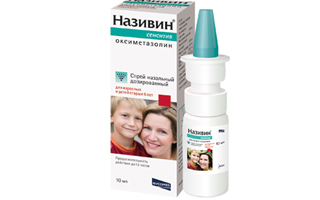 If a child coughs and sneezes at 4 months, you need to monitor his health. If it worsens, you should call a doctor. If there is phlegm in the lungs, the doctor will most likely prescribe mucolytics - drugs that accelerate the passage of mucus. You may also need vibrating chest massage. If sputum is absent, treatment will be more effective with cough suppressants.
If a child coughs and sneezes at 4 months, you need to monitor his health. If it worsens, you should call a doctor. If there is phlegm in the lungs, the doctor will most likely prescribe mucolytics - drugs that accelerate the passage of mucus. You may also need vibrating chest massage. If sputum is absent, treatment will be more effective with cough suppressants.
If a child sneezes for 5 months, you can use the drug Nazivin. The maximum treatment period for infants from 3 months is 3 days. This drug reduces swelling in the nose, inhibits the formation of mucus, and increases its viscosity.
Sneezing and coughing in a child 3-6 months
If a child is 6 months old sneezes and snot does not allow breathing freely, use drops that can be used from 3 months. These drugs have different effects: moisturizing, vasoconstrictor, antiviral.
If the baby sneezes and coughs, this almost always indicates an infection. That the child hurts when sneezing rib cage, you can guess by clicking on it in the middle.
If a newborn child coughs and sneezes, it is recommended to use nasal drops Aquamaris, Aqualor baby, Derinat (they have an immunomodulatory effect).
Coughing and sneezing in babies can also occur when foreign body into the nose. To eliminate the symptom, you need to remove the foreign object.
Sneezing and runny nose in seven month old babies
Children as young as 7 months often have a runny nose if the room they are in is poorly ventilated. The pathogens contained in the dust cause snot in the baby, and he sneezes in order to make breathing easier.
Therefore, a newborn sneezes and snot are also the result of an allergic reaction. To prevent this phenomenon, parents should more often take the child out for walks and ventilate his room.
Observe if the child is 7 months old with snot and sneezes after eliminating allergens. If the runny nose continues, it is caused by a cold.
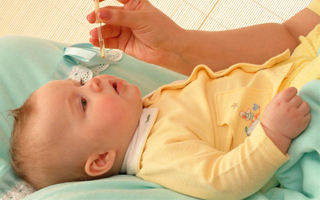 Snot in a child of 7 months, like in children older than this age, most often indicates a cold. Due to the fact that the nasal passage at this stage of life is quite narrow, any viral infection provokes congestion.
Snot in a child of 7 months, like in children older than this age, most often indicates a cold. Due to the fact that the nasal passage at this stage of life is quite narrow, any viral infection provokes congestion.
For a child who is already 7 months old, an otolaryngologist may prescribe a lavage.
How to clear mucus from a child's nose
Often, the tender mucous membrane of the child's nose is irritated by dried crusts, which he cannot remove on his own. Therefore, the baby's nostrils need to be cleaned. For this purpose, you cannot use a cotton swab, only a cotton flag dipped in warm boiled water. A cotton swab is placed in the nostril, then turned clockwise. After cleaning one nostril, the flagellum is changed and the next nostril is cleaned.
White snot leaves on its own, so there is no need to look for a way to remove them. It is enough to rinse the nostrils with an isotonic solution of sea water. A 3 month old baby should be instilled with a few drops of salt solution.
If a child sneezes at 3 months, snot forms in his nose, this most often indicates the presence of a viral infection.
The presence of a viral infection can be ascertained if the color of the mucus changes from white to green, and the consistency becomes more viscous, which prevents its discharge from the nose. In this case, the nostrils must be cleaned regularly. For this purpose, you can use special devices: aspirators, pears. In the absence of such in the house, you can use an ordinary syringe without a needle.
Means of combating children's rhinitis
Nasal congestion is indicated by the following signs: shortness of breath, sneezing, intermittent breastfeeding.
When a child reaches 6-7 months of age, a runny nose can occur due to teething. This is indicated by swelling in the gum area, an increase in temperature.
Many medicines for the common cold are allowed only from the age of two. In such a situation, solutions containing salt of the Adriatic are an excellent alternative for babies. 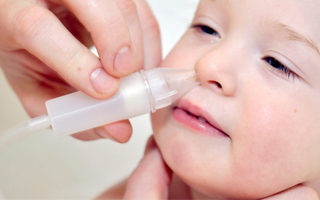 seas. You do not need a doctor's prescription to purchase these drugs, and their dosage is practically unlimited. Safe means for rinsing the nose, ordinary saline is also used.
seas. You do not need a doctor's prescription to purchase these drugs, and their dosage is practically unlimited. Safe means for rinsing the nose, ordinary saline is also used.
It is also advisable to purchase an inhaler that can be used to alleviate the condition of children under the age of one year.
According to pediatricians, a mild runny nose in children over 2 years old can be left untreated, since the immune system can already cope with the disease on its own.
Treatment
If the baby sneezes often, and his temperature rises, breathing becomes difficult, coughing begins, you should immediately show him to the doctor, who will prescribe effective treatment.
First of all, you need to find out why the baby sneezes often.
For treatment, you can resort to this folk remedylike herbal inhalation. For this purpose, you can use mint, chamomile, eucalyptus, bay leaf. But this therapy should be done very carefully so as not to cause allergies. It is useful to massage the active points on the nose, apply a curd compress.
To prevent the accumulation of mucus in the sinuses, babies with a severe runny nose should be placed so that their head is raised.
To avoid pneumonia, everything must be done to ensure that the child continues to breathe through the nose. If the baby begins to involve his mouth in this process, his condition will inevitably worsen: the pulmonary mucus will dry out, the bronchi will become clogged, and inflammation will begin.
Prevention
Sometimes infant coughs and sneezes, trying to clear the large accumulation of phlegm in the lungs. To avoid this condition, you need to avoid the accumulation of dust and pathogens: ventilate the room, do wet cleaning.
This reaction of the body is also caused by such an external stimulus as aromatic pungent odors. Therefore, you need to refresh the air naturally, and not with the help of chemicals. Therefore, you should get rid of the habit of spraying various fragrances in the children's room. The interior of this room should consist mainly of items based on natural 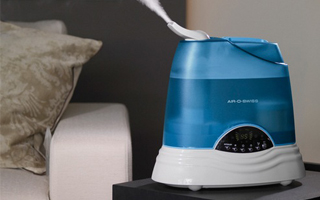 materials.
materials.
The effects of factors that provoke drying out, irritation of the nasal mucosa should be minimized.
Regular preventive measures should be wet cleaning, airing the room, dust removal. It is better that there are no soft toys, fluffy carpets in the room.
